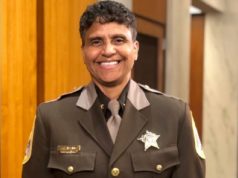There has been a fair amount of discussion of gun safety following the incident in Idaho in which a 2 year old accidently shot his mother with her own 9 mm pistol in a Walmart.
http://jonathanturley.org/2014…
One statement in the Jonathan Turley post caught my attention:
It is not clear if the safety was on the weapon, though as an experienced gun owner I assume that Rutledge had the safety on. However, it is not difficult for a child to switch of a safety.
About a year ago, I was surprised to learn that there are 9 mm semiautomatic pistols on the market which do not have a safety, unless I missed it in the manufacturer’s manual and schematic diagrams. Specifically, I am talking about the Smith & Wesson SD9 VE.
Before that, I never heard of a handgun that didn’t have a safety. What is the thinking that lead to this “feature?” Is the pistol safer to use without a safety?
From what I’ve been reading on the internet, the logic frequently used by “concealed carry” advocates goes something like this:
First, if you decide you need a concealed carry permit, then by definition the weapon you carry needs to be loaded, because an unloaded weapon makes a lousy rock. If you need the weapon, there’s no time to load it.
Second, by the same reasoning, if you need the weapon, there’s not going to be any time to chamber a round. You might not even be able to draw the weapon before you need to start shooting through your coat or pocket. So you carry the weapon with a round in the chamber.
Third, in a true emergency situation, an external safety is just one more thing that you have to remember and which can malfunction. Police officers supposedly requested the production of Smith & Wesson semi-automatic handguns without external safety mechanisms, because the external safety can be hard to use under extreme cold or heat, or with wet or bloody hands. Thus, there are those with concealed carry permits who purposely select a weapon with no external safety mechanism.
Fourth, they are fond of saying that no safety mechanism makes a handgun safe; rather, safety depends on the skill, training and experience of the user.
Interestingly, though, the military — which knows a thing or two about combat with firearms — is still buying handguns with external safety mechanisms. For example, the U.S. Marine Corps recently selected an updated version of the .45 for its standard sidearm, with a big thumb safety on both sides of the slide.
http://www.gunsandammo.com/rev…
I’ve also seen some references to Jeff Cooper’s four rules for firearm safety, which I guess are kind of famous:
1. All guns are always loaded. Even if they are not, treat them as if they are.
2. Never let the muzzle cover anything you are not willing to destroy. (For those who insist that this particular gun is unloaded, see Rule 1.)
3. Keep your finger off the trigger till your sights are on the target. This is the Golden Rule. Its violation is directly responsible for about 60 percent of inadvertent discharges.
4. Identify your target, and what is behind it. Never shoot at anything that you have not positively identified.
The shooting in the Idaho Walmart exposes the fallacy of over-reliance on such aphorisms and the skill and training of the individual gun owner. Safety mechanisms need to be on handguns because there are inevitably going to be instances where a child or someone with little training is able to touch the weapon. The service life of a reasonably maintained handgun is probably equivalent to several generations.














